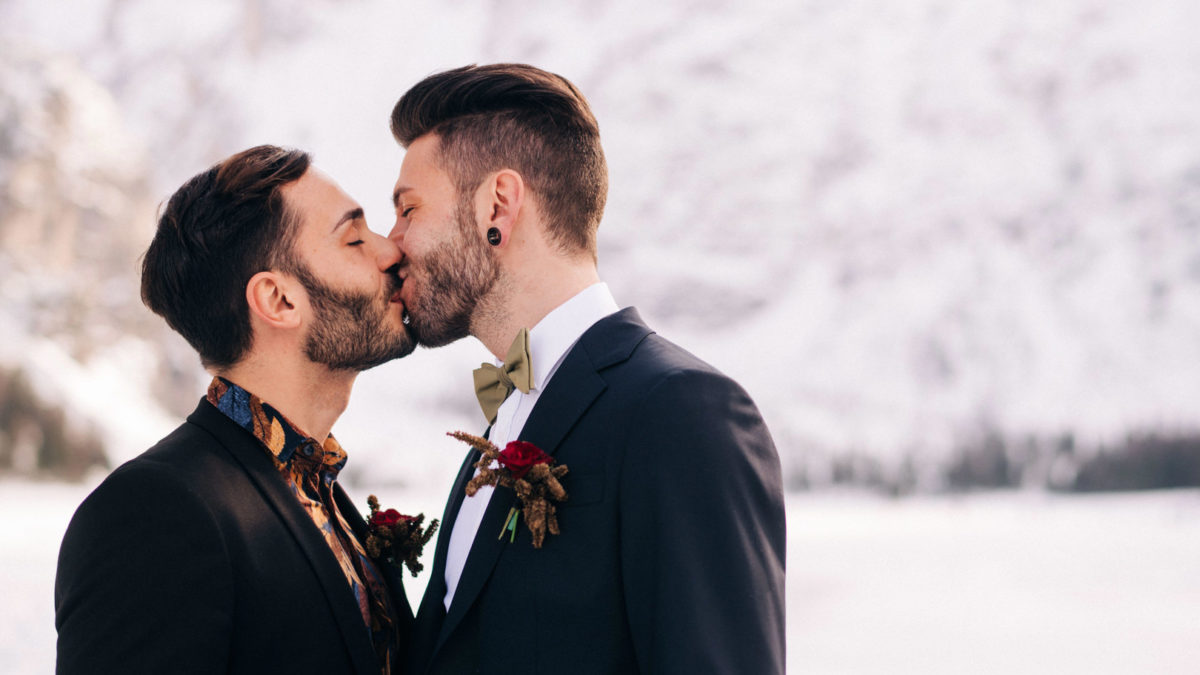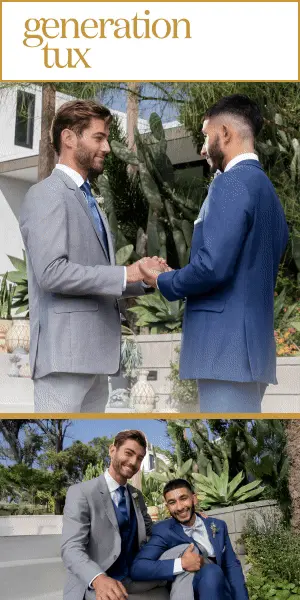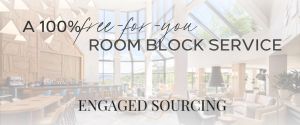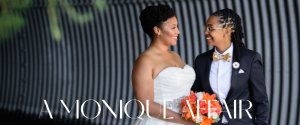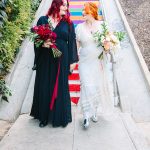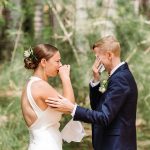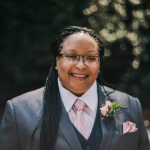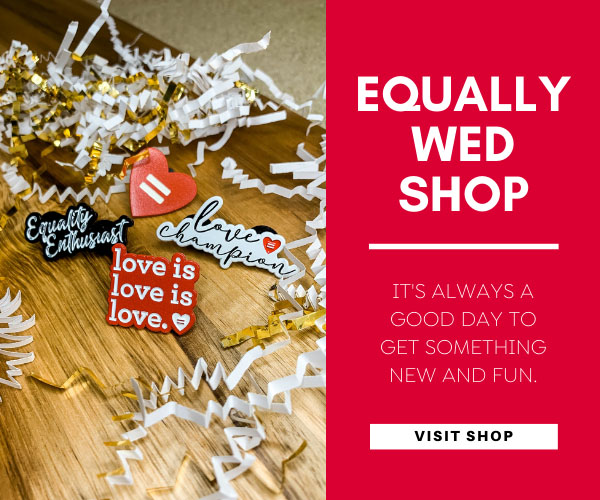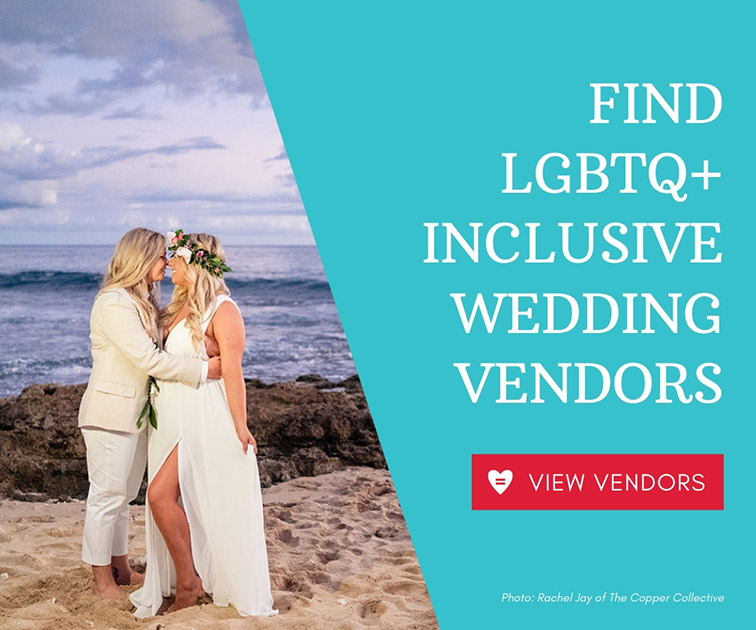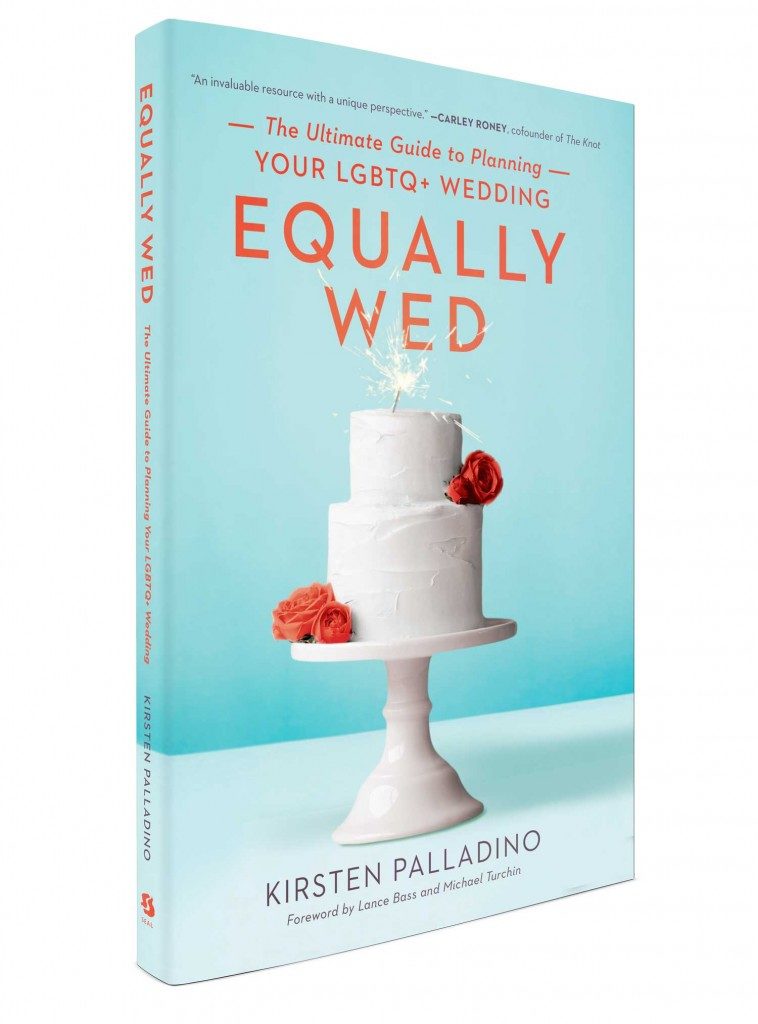If you want to work with LGBTQ+ couples, there are a few key ways to communicate that you’re inclusive. Merely being accepting is often not enough to attract LGBTQ+ couples, as they are usually searching for vendors who have made it as clear as possible that they will treat them with respect.
LGBTQ+ couples don’t want to go through the stress of wondering whether or not a vendor will be inclusive. Here are a few surefire ways to make it clear.
Include LGBTQ+ Couples In Your Marketing Materials
Across your website, social media, and anywhere else you advertise, make sure you are using couples with a variety of sexualities and gender expressions. Even if you say you are LGBTQ+ inclusive, couples could be hesitant to work with you if you don’t highlight the work you have done with LGBTQ+ couples in the past.
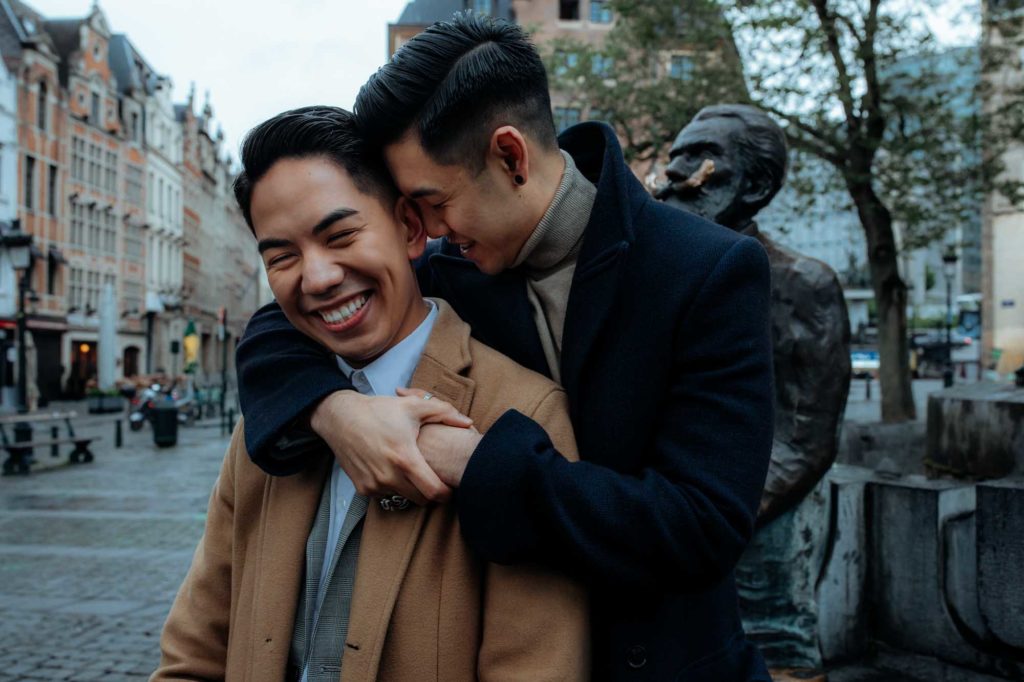
Participate in Styled Shoots With LGBTQ+ Couples
If you haven’t yet had the opportunity to work with an LGBTQ+ couple for an actual wedding or engagement, participating in a styled shoot that features one is a great way to build up your portfolio. And if you can’t find one to participate in, why not design one yourself? Pro tip: We’ve got a mini course on how to create an authentic LGBTQ+ styled shoot on equallywedpro.com.
Hang a Pride Flag in Your Window
If you have a physical storefront, there is no better way to communicate that you are welcoming than by hanging a Pride flag in your window. LGBTQ+ couples will be a lot more excited to walk through your door if they are confident that you’re welcoming from the get go.
Whether or not you have a storefront, you can also include a Pride flag on the homepage of your website. That way, couples who visit will know right away that you value inclusion.
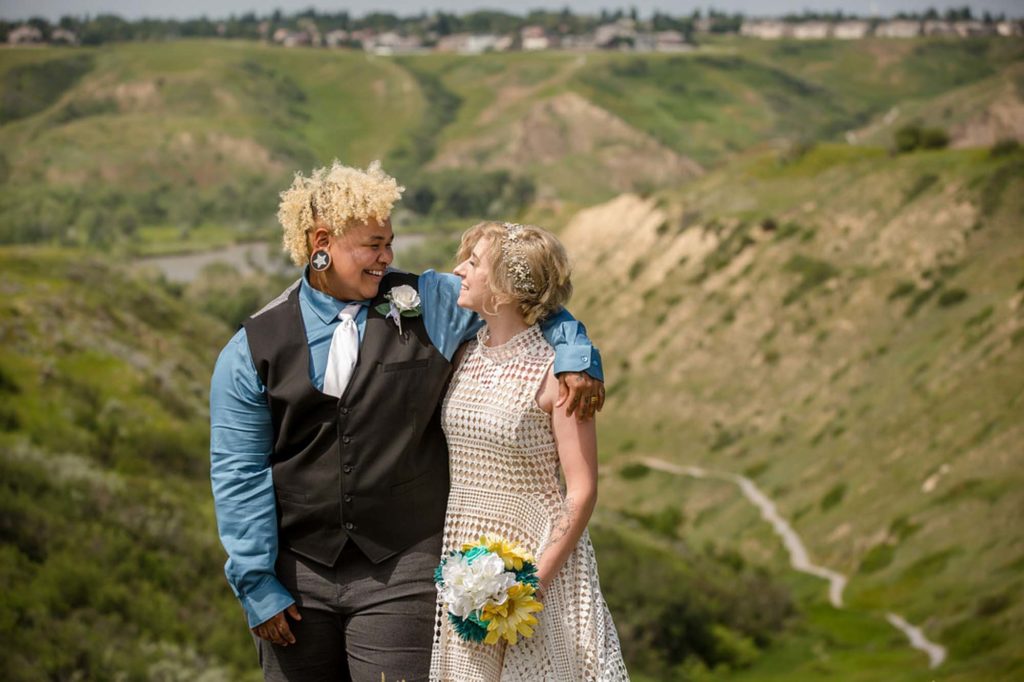
Draft a Statement of Inclusion
Providing a statement of inclusion on your website is a way to be clear and upfront about your values. It can also go beyond the LGBTQ+ community and focus on your company’s dedication to serving and respecting all marginalized groups.
Check out this great example from Equally Wed preferred vendor Venture Ever After. In it, Joyce details her commitment to amplifying marginalized voices, regularly auditing her website to ensure inclusion, making sure clients and other vendors she works with hold the same values, continuing to educate herself through workshops, and much more.
Attend LGBTQ+ Wedding Events
LGBTQ+ wedding expos are held all over the country. Do some research about any happening in your area and make sure to participate.
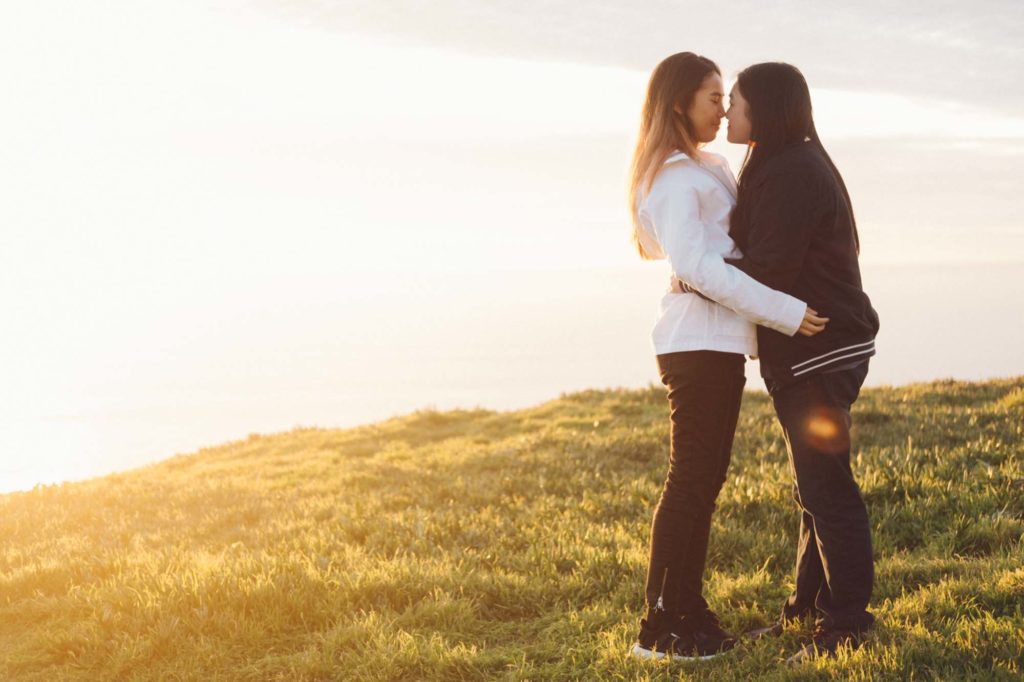
Advertise in LGBTQ+ Wedding Magazines
If you’re looking for LGBTQ+ clients, then advertise in magazines that cater to them. Readers will feel confident you are inclusive if you chose to place an ad in a magazine for them. This is not only a great way to show your inclusivity, but it may also help you build up your LGBTQ+ client portfolio.
Use Gender-Neutral Language Anywhere You Can
The number one way to make couples feel included is to never assume how they identify or how they would like to label themselves when it comes to their wedding. This means your intake forms should not say Bride and Groom, but rather Partner 1 and Partner 2, or something along those lines. (Bride/Groom and Bride/Groom as your options are still excluding people who identify with neither of those terms.) Your website can refer to Marriers and Spouses-To-Be, and in your initial meetings with clients, you should always ask for pronouns. It doesn’t matter how someone presents—never assume what pronouns they use.
There are so many gendered terms used in the wedding industry, but there are always gender-neutral alternatives. No matter who you’re working with, make it a habit to use them.

Become an Equally Wed Preferred Vendor
Join our directory of LGBTQ+ inclusive vendors and start getting discovered by more and more LGBTQ+ couples.
Take Equally Wed’s Pro Certification Course
Our Equally Wed Pro Certification Course will not only allow you to place a badge on your website showing you are a Certified LGBTQ+ Inclusive™ professional and have earned your CIP credential, but it will also teach you everything you need to know to treat LGBTQ+ couples with the dignity and respect they deserve.

Molly Sprayregen
MOST VIEWED STORIES
- The Rise of Weddings With Long-Lasting Investments: Benefits Beyond The Big Day
- How to have a green wedding that Mother Earth would attend
- Simplify wedding communication with digital engagement announcements and thank you cards
- A Spiritual and Earthy Elopement at Lassen Volcanic National Park
- Food Trucks, Craft Booze and Cultural Fusions: How New England Weddings Are Changing the Game



